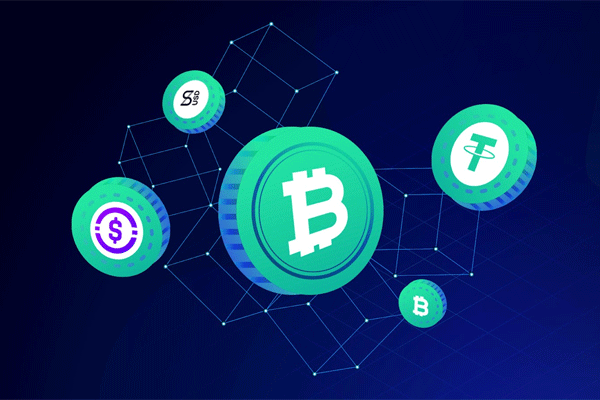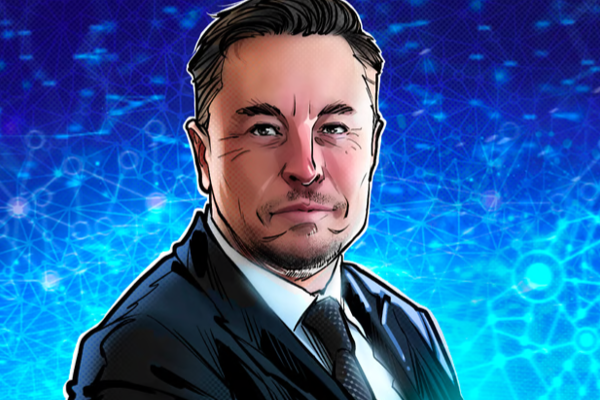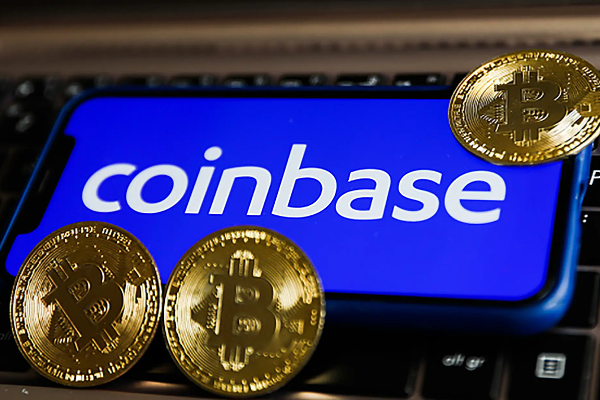Why is the Federal Reserve worried about the rise in popularity of stablecoins?

Stablecoins reveal a core contradiction: the tension between an efficient, programmable full-reserve system and a leveraged credit mechanism that can drive economic growth.
Stablecoins combine technological innovation with the financial system, bringing payment efficiency while challenging the central bank's monetary control. They are similar to "full-reserve banks". Although they do not create credit money, they may affect liquidity and interest rates. Future development may move towards a partial reserve system or merge with CBDC to reshape the global financial landscape.
The following is the original content (the original content has been reorganized for easier reading and understanding):
The rise of blockchain finance has sparked heated discussions about the future of money, many of which were originally limited to academia and central bank policy circles. Stablecoins - a digital asset designed to maintain parity with national fiat currencies - have become a mainstream bridge between traditional finance and decentralized finance. Although many people are optimistic about the adoption prospects of stablecoins, from the US perspective, promoting stablecoins may not be the best option because it will disrupt the dollar's money creation mechanism.
Brief summary: Stablecoins are actually competing with the size of deposits in the US banking system. Therefore, it weakens the money creation mechanism through the "fractional reserve system" and also affects the effectiveness of the Federal Reserve's monetary policy implementation (whether through open market operations or other means to regulate the money supply) because it reduces the total amount of deposits in the banking system.
In particular, it is worth noting that the money creation ability of stablecoins is very limited compared to the money multiplier effect of banks collateralized by long-term bonds, because stablecoins are mainly collateralized by short-term Treasury bonds (these assets are not sensitive to interest rate changes). Therefore, the widespread use of stablecoins in the United States may weaken the effectiveness of the "monetary transmission mechanism".
Even if stablecoins may increase demand for Treasury bonds and reduce the refinancing costs of the US government, their impact on money creation remains.
Money creation can only remain unchanged when the US dollar flows back to the banking system in the form of "bank deposits" as collateral. But the reality is that this approach is not cost-effective for stablecoin issuers because they will miss out on "risk-free Treasury bond returns".
Banks cannot treat stablecoins as fiat currency deposits because they are issued by private institutions, which will bring additional counterparty risks.
It is also unlikely that the US government will redirect the funds that flow into the stablecoin system due to the purchase of treasury bonds back to the banking system. Because these funds are sold at different interest rates, the government has to pay the interest rate difference between the treasury bond interest rate and the bank deposit interest rate, which will increase the federal fiscal burden.
More importantly: the "self-custody" feature of stablecoins is incompatible with the custody mechanism of bank deposits. In addition to on-chain assets, almost all digital assets require custody. Therefore, the expansion of the scale of stablecoins in the United States directly threatens the normal operation of the money creation mechanism.
The only way to make stablecoins compatible with money creation is to allow stablecoin issuers to operate as banks. But this is very challenging in itself, involving multiple complex issues such as regulatory compliance and financial interest groups.
Of course, from the global perspective of the US government, promoting stablecoins has more advantages than disadvantages: it helps to expand the dominance of the US dollar, strengthen the US dollar's position as a global reserve currency, make cross-border payments more efficient, and greatly help those non-US users who are in urgent need of stable currencies. However, it will be quite difficult to vigorously promote stablecoins in the United States without destroying the domestic money creation mechanism.
In order to explain the core content of this article in more detail, the operating logic of stablecoins is analyzed from multiple perspectives:
Fractional reserve system and money multiplier effect: The reserve support mechanism of stablecoins is completely different from that of traditional commercial banks.
Regulatory restrictions and economic stability: Explore how stablecoins challenge the existing monetary policy framework, market liquidity and financial stability.
Future vision: Looking forward to possible regulatory models, partial reserve models and the development path of central bank digital currencies.
Fractional reserve system vs. fully reserve-backed stablecoins
Classic money multiplier principle
In mainstream monetary theory, the core mechanism of money creation is the "fractional reserve system". A simplified model can illustrate how commercial banks expand base money (usually denoted as M0) into broader forms of money, such as M1 and M2.
If R is the statutory or bank-set reserve ratio, the standard money multiplier is approximately: m = 1 / R
For example, if a bank must keep 10% of its deposits as reserves, the money multiplier m is approximately 10. This means that for every $1 injected into the system (e.g., through open market operations), up to $10 of new deposits may eventually form in the banking system.
M0 (monetary base): cash in circulation + commercial banks’ reserves at the central bank
M1: cash in circulation + demand deposits + other deposits that can be used to write checks
M2: M1 + time deposits, money market accounts, etc.
In the United States, M1 ≈ 6 × M0. This expansion mechanism supports the development of the modern credit system and is the core foundation for mortgages, corporate financing, and other productive capital operations.
Stablecoins as “narrow banks”
Stablecoins issued on public chains (such as USDC, USDT) usually promise 1:1 support with fiat currency reserves, U.S. Treasury bonds, or other highly liquid assets. Therefore, these issuers do not “lend” customer deposits like traditional commercial banks. Instead, they provide liquidity on the chain by issuing digital tokens that are fully convertible into “real dollars.”
From an economic perspective, these stablecoins are more like narrow banks: financial institutions that back their "deposit-like liabilities" with 100% high-quality liquid assets.
From a purely theoretical perspective, the money multiplier of these stablecoins is close to 1: unlike commercial banks, stablecoin issuers do not create "extra money" when they accept $100 million in deposits and hold an equal amount of Treasury bonds. But if these stablecoins are widely accepted in the market, they can still play the role of money.
We will further explore this later: even if they do not have a multiplier effect themselves, the underlying funds released by stablecoins (such as funds from the US Treasury auctions used by stablecoin companies to buy Treasury bonds) may be used again by the government for spending, thus having an overall monetary expansion effect.
Impact of monetary policy
Fed master account and systemic risk
For stablecoin issuers, it is crucial to obtain a Fed master account because financial institutions with this account can enjoy a number of advantages:
· Direct access to central bank money: The balance in the master account belongs to the highest level of liquid assets (i.e., part of M0).
·Access to the Fedwire system: quasi-instant settlement rights for large transactions can be achieved.
·Enjoy the support of the Federal Reserve's permanent tools: including mechanisms such as the Discount Window and the Interest on Excess Reserves (IOER).
However, giving stablecoin issuers direct access to these facilities still faces two major "excuses" or resistance:
·Operational risk: Integrating real-time blockchain ledgers with the Fed's infrastructure may bring new technical vulnerabilities.
·Limited control over monetary policy: If a large amount of funds flow into a 100% reserve stablecoin system, it may permanently change the "partial reserve" credit regulation mechanism that the Fed relies on.
Therefore, traditional central banks may resist giving stablecoin issuers the same policy treatment as commercial banks, fearing that they will lose their ability to intervene in credit and liquidity during financial crises.
The "net new money effect" brought by stablecoins
When a stablecoin issuer holds a large amount of U.S. Treasury bonds or other government debt assets, a subtle but critical effect, the "double-spend effect", will occur:
· The U.S. government uses the people's funds (i.e. the bond purchase funds of the stablecoin issuer) to finance expenditures;
· At the same time, these stablecoins can still be circulated and used in the market like money.
Therefore, even if it is not as strong as the fractional reserve mechanism, this mechanism may still "double" the effective disposable dollar circulation to the greatest extent.
From a macroeconomic perspective, stablecoins actually open up a new channel for government borrowing to flow directly into the daily transaction system, enhancing the actual liquidity of the money supply in the economy.
Fractional reserves, hybrid models and the future of stablecoins
Will stablecoin issuers move towards a "quasi-bank" model?
Some people speculate that in the future, stablecoin issuers may be allowed to use part of their reserves for lending, thereby imitating the "fractional reserve" mechanism of commercial banks to create money.
To achieve this, strict regulatory mechanisms similar to those of the banking system must be introduced, such as:
·Banking license
·Federal Deposit Insurance (FDIC)
·Capital adequacy standards (such as the Basel Accord)
Although some draft legislation, including the "GENIUS Act", provides a path for stablecoin issuers to be "bank-like", these proposals generally still emphasize 1:1 reserve requirements, which means that the possibility of switching to a partial reserve model in the short term is low.
Central Bank Digital Currency (CBDC)
Another more radical option is for the central bank to directly issue central bank digital currency (CBDC), that is, digital liabilities issued directly by the central bank to the public and businesses.
The advantages of CBDC are:
·Programmability (similar to stablecoins)
·Sovereign credit endorsement (national issuance)
But for commercial banks, this poses a direct threat: if the public can open digital accounts at the central bank, they may transfer deposits from private banks on a large scale, thereby weakening the bank's lending capacity and even triggering a "digital bank run".
Potential impact on the global liquidity cycle
Today, large stablecoin issuers (such as Circle and Tether) hold tens of billions of dollars in short-term U.S. Treasuries, and their capital flows have had a real impact on the U.S. money market.
· If users redeem stablecoins on a large scale, issuers may be forced to quickly sell T-bills, thereby pushing up yields and causing instability in the short-term financing market.
· On the contrary, if the demand for stablecoins surges, buying a large number of T-bills may depress their yields.
This positive and negative "liquidity shock" shows that once the market size of stablecoins reaches the level of large money market funds, they will truly penetrate into the traditional monetary policy and financial system operating mechanism and become the core participants of "shadow currency".
Conclusion
Stablecoins are at the intersection of technological innovation, regulatory system and traditional monetary theory. They make "currency" more programmable and accessible, providing a new paradigm for payment and settlement. But at the same time, it also challenges the delicate balance of the modern financial system, especially the fractional reserve system and the central bank's control over currency.
In short, stablecoins will not directly replace commercial banks, but their existence continues to put pressure on the traditional banking system, forcing the latter to accelerate innovation.
As the stablecoin market continues to grow, central banks and financial regulators will have to face the following challenges:
· How to coordinate global liquidity changes
· How to improve regulatory structures and cross-sector collaboration
· How to introduce greater transparency and efficiency without undermining the money multiplier effect
The future path of stablecoins may include:
· Stricter compliance supervision
· Partial reserve hybrid model
· Integration with CBDC system
These choices will not only affect the development trajectory of digital payments, but may even reshape the direction of global monetary policy.
Ultimately, stablecoins reveal a core contradiction: the tension between an efficient, programmable full reserve system and a leveraged credit mechanism that can drive economic growth. How to find the best balance between "transaction efficiency" and "monetary creativity" will be a key issue in the evolution of the future monetary and financial system.









